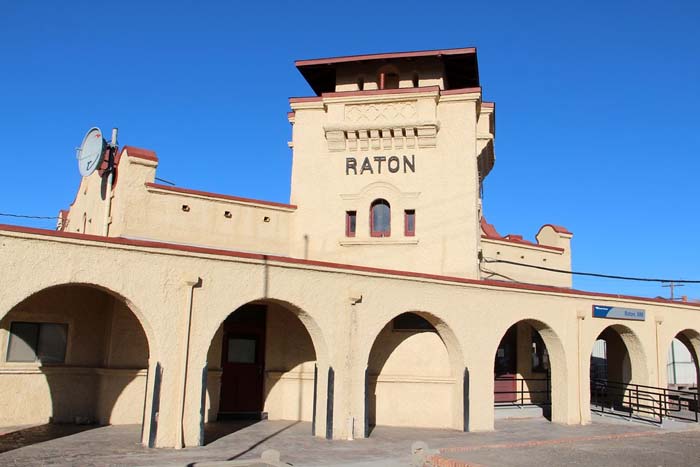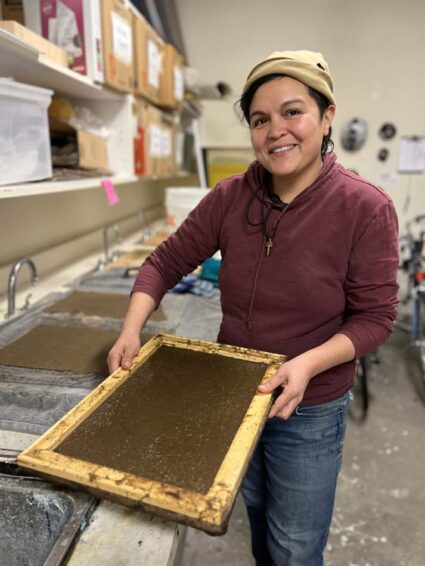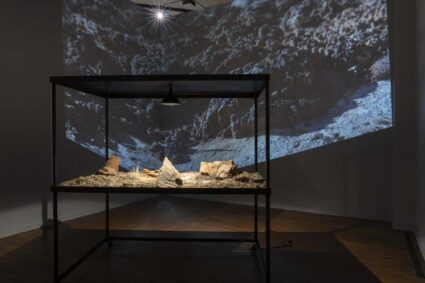In the early 20th century, bricks were brought over Raton Pass to Raton, New Mexico from the Trinidad Brick Company. We stole this brick for our backyard.

In the early 20th century, bricks were brought over Raton Pass to Raton, New Mexico, from the Trinidad Brick Company to build a roundhouse for servicing and storing locomotives. The roundhouse wouldn’t last long—only ninety years or so. It’d be demolished in the ʼ80s, and the brick left along the tracks as ballast. Each brick was inscribed “Trinidad”: a clear play, in my young mind, to remind Raton who was the bigger town. The bricks were strong, but some were damaged and cracked; they bore and supported, but they just as well might crumble under pressure. We never knew which to expect.
Technically, these bricks were the property of the city, but my mom never minded. She stood lookout while my older sister, dad, and I loaded as many as we could fit into her hatchback for use in our backyard. I subjected each brick I picked up to an angled lift and underside examination to determine if there were any spiders. I’d escape to the other side of the pile if there were any, but those that only showed signs of webbing, I’d lean back down for my sister.
My mom directed theater in town, and when she wasn’t running rehearsals for summer stock, she’d landscape. She spent our first year in town, when I was seven, sketching extravagant plans for the backyard—walkways, patios, replacing the wood chips and perennial litter with grass and sprinklers. Her plans relied heavily on brick. Every summer, we’d have a new backyard patio or winding path punctuated by the repetition of “Trinidad, Trinidad, Trinidad,” or, when she had to cut the bricks in half, “-idad, Trin-, idad.” She built a patio of just the latter half for Father’s Day—she called it the “Dad-io.” The bricks were her medium. Inscribed with the region, they made us feel permanent and local.
Leaving Raton eventually, like leaving any small town, was characterized not by a clean break, but a gradual crumbling under pressure. In those last few years, the weight became legal, social, even medical. My mom threw herself into the backyard—evening after evening, we’d find ourselves back by the railroad, not borrowing bricks but pilfering them, to fix ourselves into the ground and establish our presence as permanent. This didn’t work. When we left, the backyard went unfinished. We abandoned a pallet of stolen bricks for the next family, and that hurt my mom. She didn’t landscape when we moved south. She didn’t want to risk another home going incomplete.
The bricks were like us, local-ish, brought over and invested in the community. But, like us, they marred themselves with the label of outsider. Looking at Trinidad bricks, their history never mattered: the roundhouse they had built in town, the tracks they had lived on for decades, the streets they piled up on. No amount of time could etch “Raton” into their facings. All they could do was lie there and collect dust—collect dust and crumble.
We left Raton ten years ago. My parents live in Albuquerque now. Last year, my mom started to landscape again, and in this yard, too, she uses brick. These ones are blank. Sometimes they have holes, and when they do, she fills them with marbles.




